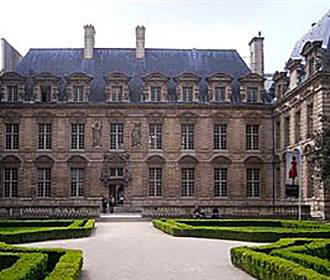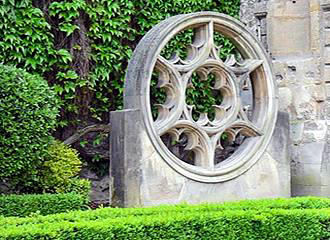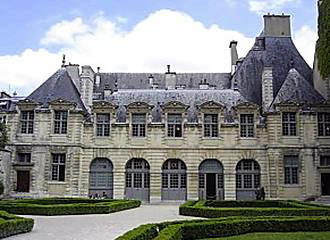Hotel de Sully Mansion in Paris
The Hotel de Sully is also known as the Hotel de Bethune-Sully which was originally built as a private mansion house in the 1600s, then over 250 years later it was listed as an historical monument in Paris in 1862, and is well worth visiting this building with its incredible architecture that you will be able to admire when you are walking around the city near the Place des Vosges.
A bit of history on Hotel de Sully
Mesme Gallet, the superintendant of finance, decided to have a private mansion house built in the heart of the Marais area, which was at the time a very fashionable district, and so the building work started in 1625 that would include a garden and an orangery.
The development of the area was originally launched by King Henry IV and was overseen by Maximilien de Bethune, Duc de Sully, including the Place Royale, which is now called the Place des Vosges, and the orangery of this elegant and stunning mansion house opens onto this square.
Maximiliende Bethune, the first Duc de Sully, who was the retired former minister of finance and the superintendant of buildings to King Henri IV, purchased this elegant mansion house in 1634, which he then named the Hotel de Sully, and this is where he lived until he died.
Having already completed the interior decor, this beautiful mansion was then passed to his Grandson Maximilien, the second Duc de Sully, who actually had an additional wing added to the building in 1660, and the Hotel de Sully remained in the same family right through until the 18th century.
But in fact, there have been some famous people such as the famous philosopher and writer Voltaire, who is now buried at the Pantheon, actually stayed at this mansion house at some point.
However, from the 18th century, the Hotel de Sully then passed hands several times, becoming an investment property in the 19th century, yet then had new owners again who started to bring the mansion back to how it originally was and it was declared an historical monument in Paris in 1862.
Then in 1944 the Hotel de Sully became a property of the state and after World War II a long restoration project was undertaken that was finally completed with the Orangerie in 1973. Yet during this time it became the head office for historical monuments, which is now known as the Centre des Monuments Nationaux, that manage many of the prestigious monuments throughout Paris and the rest of France such as the Sainte Chapelle and La Conciergerie along with the Tower visits to the Notre Dame Cathedral.
And this building also used to be home to a contemporary photo exhibition, but was moved to the Musee Jeu de Paume in 2004.
Visiting Hotel de Sully
Unfortunately, the Hotel de Sully has not been open to the public very often since the mid 2000s, but the Centre des Monuments Nationaux is looking at changing that with guided tours designed as a lecture visit of around 90 minutes either in French, English or Spanish.
But for the mean time, during opening hours of 9am to 6pm you can still enter the courtyard and admire the stone work of the mansion that is in complete contrast to the buildings around it at the Place des Vosges, and by going through the porch into the main paved courtyard, you will see the two main pavilions.
You can continue past two sphinxes through to a passageway and the garden with the back facade of the Hotel de Sully, that mimics the front, and you can also access the Place des Vosges from the grounds of this impressive mansion house built in the architectural style of a King Louis XIII building.
Now when it comes to getting here via public transport, the nearest Metro stations are the Saint-Paul stop to the west that serves Line 1, or to the east you have the Bastille stop at the Place de la Bastille, which serves Lines 1, 5 and 8.
Alternatively, the Bus Lines 29, 69, 76 and 96 along with the Noctilien Night Bus Service via Lines N11 and N16 will also get you within walking distance of the Hotel de Sully.
Address and contact details
Hotel de Sully, 62 Rue Saint-Antoine, 75004, Paris, Ile de France, France
Tel: +33 (0) 1 44 61 21 50
Fax: +33 (0) 1 44 61 20 36
GPS: 48.8547, 2.3639


